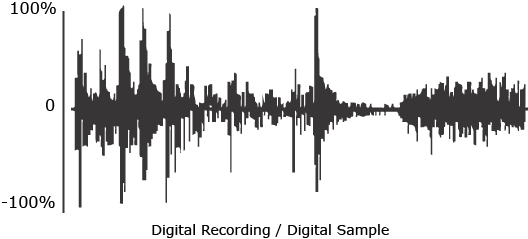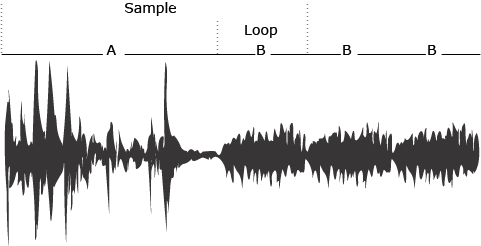18. Digital Recording
A digital recording, either as a substitute for an oscillator that outputs a periodic wave or as a replacement for a noise generator, may be used as a generator in the synthesis process. A digital recording outputs (plays back) whatever sound has been previously recorded. In some systems desired sounds are recorded directly into the system, while in others a group of predefined recordings is available. These recordings may be as diverse as all recorded sound—perhaps a voice singing one or more notes, a car screeching to a halt, or even the sound of a hammer pounding a nail. This digital sample, or sample, is typically short in duration and, unlike the output of an oscillator, is usually non-periodic.
Example 18-1: Most sounds are comprised of waveforms which are non-repeating. A non-periodic waveform contains non-repeating amplitudal patterns.
Sometimes a sample is too short to suit one's purposes. A user, employing the process known as looping, can make the system play back all or part of the digital recording over and over again, thereby extending the duration of the output. The recording will have a beginning loop point and an ending loop point. If such a digital recording were triggered it would first play the chosen sample ("A"), and then play the looped portion ("B") repeatedly. In most systems the loop beginning and end are user-definable so the entire recording or only a small segment of it may be looped.
Example 18-2: Looping allows the user to repeat all or a portion of a recorded sound.
The use of a digital recording as a sort of surrogate oscillator is only one simple and limited way that recordings are used in the synthesis process. There are a vast number of other means available to manipulate and modify recordings, presenting unlimited and exciting musical possibilities.





